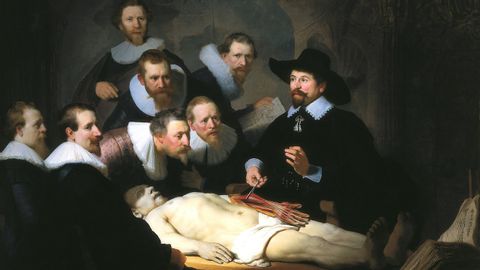レンブラント、タルプ先生の解剖学レッスン (Rembrandt, The Anatomy Lesson of Dr. Tulp)
vulvul が 2021 年 01 月 14 日 に投稿  この条件に一致する単語はありません
この条件に一致する単語はありませんUS /ˈɪntəməsi/
・
UK /'ɪntɪməsɪ/
US /məˈnɪpjəˌlet/
・
UK /mə'nɪpjʊleɪt/
- v.t.操る;操作する;操作する;操作する;改ざんする
US /riˈælɪti/
・
UK /rɪ'ælətɪ/
US /ˈnærətɪv/
・
UK /ˈnærətɪv/
- n. (c./u.)物語;物語;語り口;解説
- adj.物語風の : 物語から構成される
エネルギーを使用
すべての単語を解除
発音・解説・フィルター機能を解除

